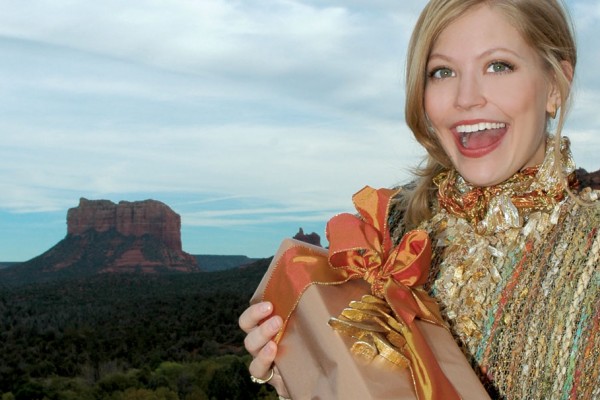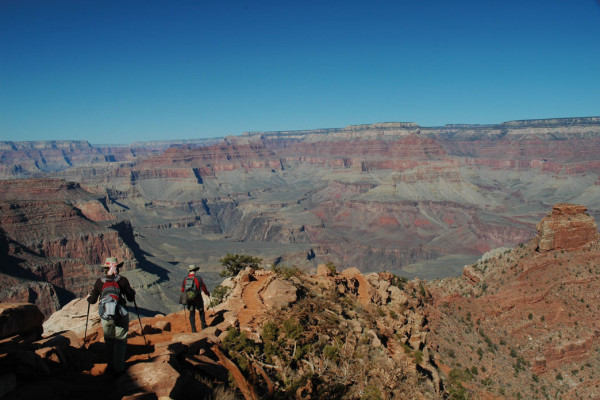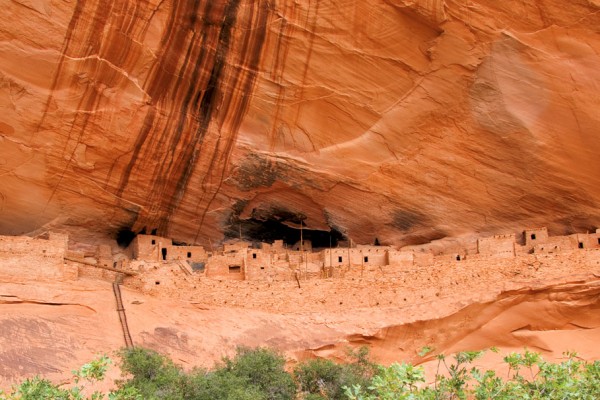Continued (page 2 of 3)
If the name Acoma conjures up images of black, white and orange pottery, that’s because the Acoma are best known for their ceramic works of art. If you’re hoping to return home with a piece of pottery, you won’t be disappointed. Potters sell their wares in front of their homes – everything from whimsical ceramic cats to seed-storage pots to larger, gallery-worthy artworks. Traditionally, it’s the women who make the pots, though men have taken up the craft in recent decades. The artist is usually on hand to answer questions and explain the intricate if not downright mysterious symbols painted on the pottery. Prices range from $5 to hundreds of dollars, depending on the pot’s size and whether or not it was created using traditional techniques or made from a mold. Many artists do not accept credit cards or checks, so make sure you have cash. Tribal members also sell jewelry, fry bread, Indian tea, water, small fruit pies and other snacks along your tour route.
None of the 80-plus homes at the pueblo have running water, electricity or indoor plumbing. Most of the homes have one or two large rooms that are heated with wood stoves. Families are continuously refurbishing and re-building their homes so that modern dwellings stand next to those that are hundreds of years old (even modern homes retain the traditional architecture).
The tour makes its way to the north end of the mesa, where the views get even better. From here you can see the steep road that led you from I-40 to Acoma. Mt. Taylor looms on the horizon. Enchanted Mesa, which has its own tragic tale of starvation and suicide, looks like the mesas in Monument Valley. As the tour ends, you’re given the choice of taking a bus back to the cultural center, making a short walk down the road, or climbing down the stair trail, which was used by the Acoma long before the road was built in 1920. We opted to take the latter, which proved to be an adventurous choice. The steep stair trail makes use of foot- and hand-holds in the side of the mesa, so you might want to think twice about the trail if you’re carrying pottery; however, the chance to use the same route the Acoma used on a daily basis for hundreds of years was too good to pass up.
Sky City Cultural Center
Give yourself enough time when touring Acoma Pueblo to take in the Sky City Cultural Center, a beautiful contemporary take on pueblo-style architecture situated at the base of the mesa beneath the pueblo. The cultural center houses a museum, gift shop, meeting space and restaurant. Behind the museum you’ll find a courtyard where artisans sell their creations. The current center opened in May 2006 after fire destroyed the first center in 2000. We loved the attention to detail at the center, right down to the niches filled with tiles hand painted by local schoolchildren.
Currently, Haak’u Museum features two exhibits, which we recommend you view before touring the pueblo for a better understanding of Acoma history. The Matriarchs is a pottery exhibition focusing on four master potters who are credited with the Acoma pottery renaissance: Lucy Lewis, Juana Leno, Jessie Garcia and Marie Chino. The exhibit also includes a display of utilitarian “whiteware” pottery, information on how pots are traditionally sculpted and the materials used to paint the exteriors.
The second exhibit, on display until November, is The History of the Restoration of the San Esteban del Rey Mission: 1700 – Present. Artifacts on display include a 17th century priest’s vestment, original ceiling beams and tools used in the mission’s construction. In 2007, the mission became the 28th National Trust for Historic Preservation Site – the only tribal site in the U.S. to have such a distinction.
In our opinions, no cultural experience is complete without sampling the local cuisine. Luckily, there’s Yaak’a Café at the cultural center. We ate an early dinner at the café and dined on Red Chile Beef Posole and Green Chile Pork Stew, both considered Acoma Feast Day stews, as well as Traditional Acoma Lamb Stew. All three came with fry bread. The café also serves tamales, burgers, sandwiches, tacos and breakfast. Dine indoors or sit outside and enjoy views of the pueblo.



